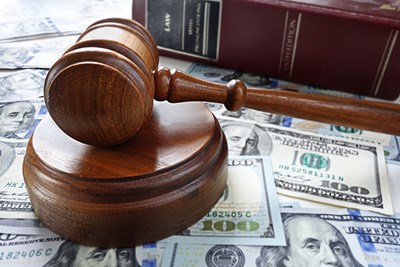Many people have heard that filing for bankruptcy can be a good way to quickly erase any debts they have, but very few people understand exactly what the bankruptcy process is or how it works. While it can be a good financial strategy for some people who have certain kinds of debts, it isn’t the right financial solution for everyone. To figure out if bankruptcy filing is right for you, it's important to understand the different types of bankruptcy chapters that exist under Title 11, the main source of U.S. bankruptcy law code.
Chapter 7 Bankruptcy
When most people think about bankruptcy, they tend to picture Chapter 7. This type of bankruptcy is meant to help people who need to completely erase their debt because they cannot afford to make any payments toward reducing it. In fact, Chapter 7 is the hardest type of bankruptcy for debtors have approved. The exact qualifications for filing vary between states. In general, people applying for Chapter 7 have to be able to prove that their income and assets are too low to enable them to be able to pay back all of the debts listed in the filing within a reasonable period of time.
Typically, debts such as credit cards, payday loans, personal loans, and medical debt are completely erased. This means that the filer does not have to make further payments. If, however, a person wants to include their secured debts (such as car loans and mortgages), it is possible the court will require the filer to sell the asset that is tied to the loan. The proceeds from this sale are usually given to the bank or other entity that owns the loan. Child support, tax debt, and student loan debt are almost never discharged during a bankruptcy filing.
Chapter 13 Bankruptcy
A lesser known type of bankruptcy is Chapter 13. This method was designed for individuals who have the capability to pay off some or all of their debt, but not necessarily in the timeline agreed to with creditors. This section of the bankruptcy code is used by people who have a big enough income to make some type of payment on their debts. After filing, a judge will either approve the repayment plan submitted by the filer, require modifications to the proposal, or craft a new plan. Typically, these payment plans last for five years and can partially or completely pay off the filer's debt.
Chapter 7 Bankruptcy
Under this type of bankruptcy filing, a debtor will most likely be required to sell more assets or devote more income towards debt repayment than would be found under Chapter 7. Both secured and unsecured debts can be placed on the list by the bankruptcy judge as loans that the filer must make payments on.
Chapter 11
Chapter 11 bankruptcy is the most well-known type of filing for businesses bankruptcy. Debts can be discharged or restructured during this type of filing. Private individuals do not file Chapter 11.



